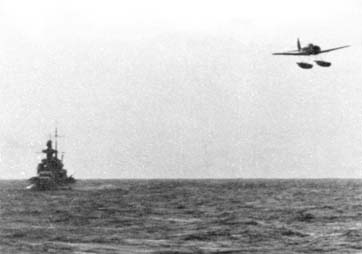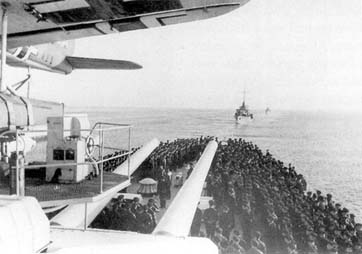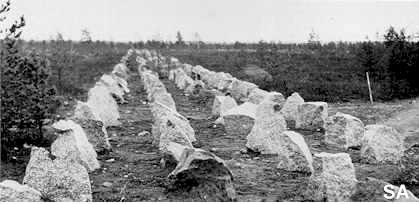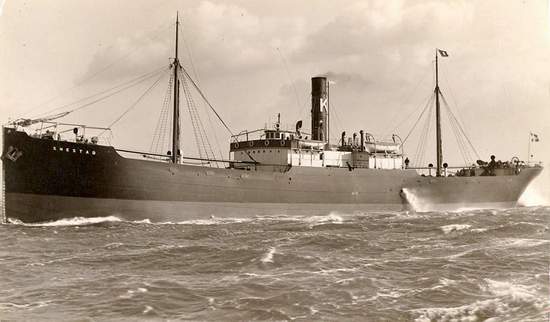Friday 23 February 1940
 |
| HMS Gurkha. |
The Soviets appear to have an inkling about the Allied plans to intervene in Finland. They slow the tempo of operations and submit peace terms, suggesting that the Finns may have just a tiny bit of negotiating room.
Winter War Naval Operations: The Finns operating out of Viipurinlahti Bay attempt to re-take Lasisaari Island, but withdraw after dark.
Winter War Peace Talks: The Soviet ambassador in Stockholm, Madame Kollontai, delivers a list of Soviet demands for peace to the Finnish Foreign Minister Väinö Tanner. The Finns are displeased at the terms. The Finnish Foreign Affairs Committee meets to consider them. Among other things, they require the entire Karelian Isthmus, including Finland's second-largest city Viipuri. The Soviets also require territory completely surrounding Lake Ladoga, islands in the Gulf of Finland and a 30-year lease on the naval base at Hanko. In exchange for these concessions, the Soviets would agree to return Petsamo. The terms expire on 1 March 1940.
Looked at from the cold gaze of 75 years later, the terms are not too onerous. There are no reparations demanded, Finland would retain its heartland along the Gulf of Finland and its independence, and it would still have an outlet to the sea in the north. All things considered given an unwinnable war...
Battle of the Atlantic: U-53 (Korvettenkapitän Harald Grosse) is sunk in the North Sea in the mid-Orkneys by depth charges from the British destroyer HMS Gurkha. All 42 aboard perish.
HMS Ajax and Exeter, two of the ships from the Battle of the Platte, return to England and march through London's Guildhall. Cheering crowds salute the 700 officers and men. HMNZS Achilles returns to New Zealand to a similar reception.
British freighter Benvolio hits a mine and sinks.
The RAF bombs German warships in the Heligoland Bight during the night, with one aircraft failing to return.
The Luftwaffe returns the favor, attacking British shipping by moonlight. The freighter Gothic is strafed.
The British at Gibraltar detain the US freighter Lehigh for several hours, then let it proceed.
Convoy OA 97 departs from Southend, Convoy OB 97 departs from Liverpool, and Convoy OG 19 forms at Gibraltar.
European Air Operations: The RAF conducts a leaflet raid on Prague, which has been the center of numerous student protests in recent months. It also performed reconnaissance over Austria and Bohemia-Moravia.
Moscow denies bombing the Finnish town of Pajala along the Swedish border on 21 February.
German/Norwegian Relations: The two nations sign a trade agreement.
Turkey: The Turkish government declares a state of emergency following a (false) report of a Soviet unit crossing the frontier.
Future History: Actor Peter Fonda, son of Henry and sister of Jayne Seymour Fonda (currently 2 years old), is born in New York City. He becomes famous as an actor in the 1960s for films such as "Easy Rider." He passes away on 16 August 2019.
 |
| Väinö Tanner, Finnish Foreign Minister. |
February 1940
February 3, 1940: Soviets Capture a BunkerFebruary 4, 1940: Peace Talks in Stockholm
February 5, 1940: Allies to Invade Norway
February 6, 1940: Careless Talk Costs Lives
February 7, 1940: IRA Terrorists Executed
February 8, 1940: Spies!
February 9, 1940: The Welles Mission
February 10, 1940: Confiscation of Jewish Goods
February 11, 1940: Soviets Attack Mannerheim Line
February 12, 1940: Breaches In Mannerheim Line
February 13, 1940: Soviets Inching Forward in Finland
February 14, 1940: Soviets Batter Mannerheim Line
February 15, 1940: Finns Retreat
February 16, 1940: Altmark Incident
February 17, 1940: Manstein and Hitler Discuss Fall Gelb
February 18, 1940: Operation Nordmark
February 19, 1940: King Gustav Says No
February 20, 1940: Falkenhorst Commands Weserubung
February 21, 1940: Radar Advances
February 22, 1940: Friendly Fire
February 23, 1940: Soviets Present Their Demands
February 24, 1940: Fall Gelb Revised
February 25, 1940: Mr. Welles Comes to Visit
February 26, 1940: Battle of Honkaniemi
February 27, 1940: Finns Retreat Again
February 28, 1940: Overseas Volunteers Help Finland
February 29, 1940: Finns Accept Soviet Terms In Principle
2020











